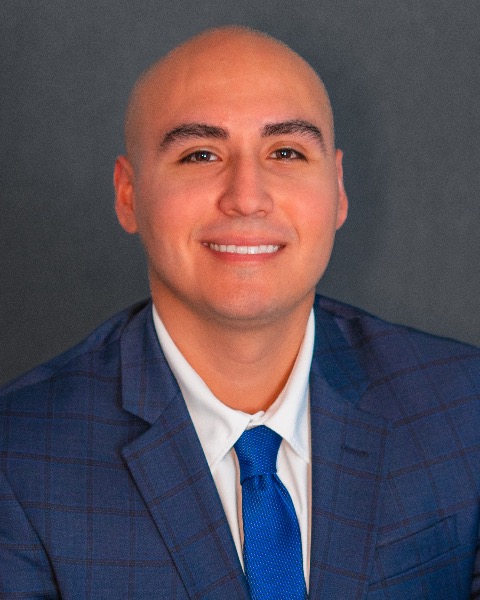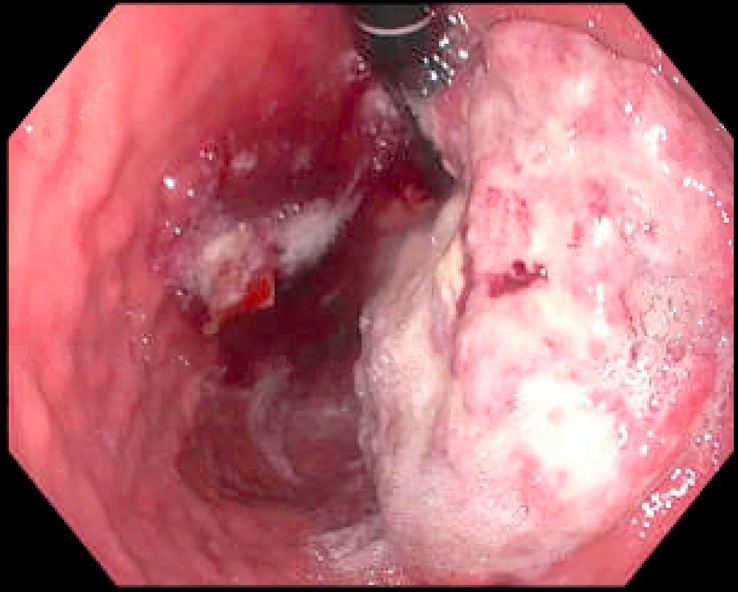Back
Poster Session C - Monday Afternoon
C0734 - A Case of Non-Cardia Gastric Cancer in a Patient From Cuba
Monday, October 24, 2022
3:00 PM – 5:00 PM ET
Location: Crown Ballroom

Omar Calderon, Jr., MD
University of South Florida
Tampa, FL
Presenting Author(s)
Omar Calderon, MD1, Krishen Patel, MD1, Rene D. Gomez-Esquivel, MD2
1University of South Florida, Tampa, FL; 2USF Health Morsani College of Medicine, Tampa, FL
Introduction: We present a case of stage 4 non-cardia gastric cancer in a patient from Latin America and illustrate the need for gastric screening guidelines for high-risk groups.
Case Description/Methods: A 48-year-old Hispanic male with no prior medical history presented to the emergency department (ED) after two months of worsening burning epigastric pain and fifteen-pound unintentional weight loss. The patient was born in Cuba and moved to the United States 5 years prior. In the emergency department, the patient was hemodynamically stable and afebrile. His abdominal exam was significant for epigastric and left lower quadrant tenderness without rebound or guarding. His labs were significant for a hemoglobin of 11.7 grams per deciliter, iron of 22 micrograms per deciliter, and ferritin of 13.3 nanograms per milliliter. Imaging the abdomen with computerized tomography was significant for a nodular lesser curvature mass measuring 8.4 by 5.4 centimeters. Esophagogastroduodenoscopy was performed and revealed a fungating, ulcerated mass on the lesser curvature of the stomach. A biopsy of the mass was significant for poorly differentiated adenocarcinoma, and a gastric biopsy was significant for chronic gastritis with Helicobacter pylori-like organisms. The patient underwent endoscopic ultrasonography, which revealed stage T4 gastric cancer with a 5-year survival of 13.8% vs. 5.3% after curative and noncurative resection, respectively.
Discussion: Gastric cancer is the third leading cause of cancer-related deaths in the United States. According to the American Association for Cancer Research Disparities Progress Report 2022, gastric cancer incidence and mortality is more than two-fold higher in both Black and Hispanic Americans than in non-Hispanic White (NHW) Americans. When diagnosed early, gastric cancer has a five-year survival rate of 67%; if resected with stage IA or IB, the five-year survival is 94% and 88%, respectively. Over 90% of noncardia gastric cancer is attributable to Helicobacter pylori which has a three-fold higher prevalence in Mexican Americans and Black Americans. There are screening guidelines in countries like Japan, South Korea, Venezuela, and Chile due to the pervasive disease. In the United States, there are no gastric cancer screening guidelines despite evidence that endoscopic non-cardia gastric cancer screening for high-risk groups such as those listed above may be cost-effective.

Disclosures:
Omar Calderon, MD1, Krishen Patel, MD1, Rene D. Gomez-Esquivel, MD2. C0734 - A Case of Non-Cardia Gastric Cancer in a Patient From Cuba, ACG 2022 Annual Scientific Meeting Abstracts. Charlotte, NC: American College of Gastroenterology.
1University of South Florida, Tampa, FL; 2USF Health Morsani College of Medicine, Tampa, FL
Introduction: We present a case of stage 4 non-cardia gastric cancer in a patient from Latin America and illustrate the need for gastric screening guidelines for high-risk groups.
Case Description/Methods: A 48-year-old Hispanic male with no prior medical history presented to the emergency department (ED) after two months of worsening burning epigastric pain and fifteen-pound unintentional weight loss. The patient was born in Cuba and moved to the United States 5 years prior. In the emergency department, the patient was hemodynamically stable and afebrile. His abdominal exam was significant for epigastric and left lower quadrant tenderness without rebound or guarding. His labs were significant for a hemoglobin of 11.7 grams per deciliter, iron of 22 micrograms per deciliter, and ferritin of 13.3 nanograms per milliliter. Imaging the abdomen with computerized tomography was significant for a nodular lesser curvature mass measuring 8.4 by 5.4 centimeters. Esophagogastroduodenoscopy was performed and revealed a fungating, ulcerated mass on the lesser curvature of the stomach. A biopsy of the mass was significant for poorly differentiated adenocarcinoma, and a gastric biopsy was significant for chronic gastritis with Helicobacter pylori-like organisms. The patient underwent endoscopic ultrasonography, which revealed stage T4 gastric cancer with a 5-year survival of 13.8% vs. 5.3% after curative and noncurative resection, respectively.
Discussion: Gastric cancer is the third leading cause of cancer-related deaths in the United States. According to the American Association for Cancer Research Disparities Progress Report 2022, gastric cancer incidence and mortality is more than two-fold higher in both Black and Hispanic Americans than in non-Hispanic White (NHW) Americans. When diagnosed early, gastric cancer has a five-year survival rate of 67%; if resected with stage IA or IB, the five-year survival is 94% and 88%, respectively. Over 90% of noncardia gastric cancer is attributable to Helicobacter pylori which has a three-fold higher prevalence in Mexican Americans and Black Americans. There are screening guidelines in countries like Japan, South Korea, Venezuela, and Chile due to the pervasive disease. In the United States, there are no gastric cancer screening guidelines despite evidence that endoscopic non-cardia gastric cancer screening for high-risk groups such as those listed above may be cost-effective.

Figure: A large, fungating, ulcerated, non-circumferential mass on the lesser curvature of the stomach.
Disclosures:
Omar Calderon indicated no relevant financial relationships.
Krishen Patel indicated no relevant financial relationships.
Rene Gomez-Esquivel indicated no relevant financial relationships.
Omar Calderon, MD1, Krishen Patel, MD1, Rene D. Gomez-Esquivel, MD2. C0734 - A Case of Non-Cardia Gastric Cancer in a Patient From Cuba, ACG 2022 Annual Scientific Meeting Abstracts. Charlotte, NC: American College of Gastroenterology.
